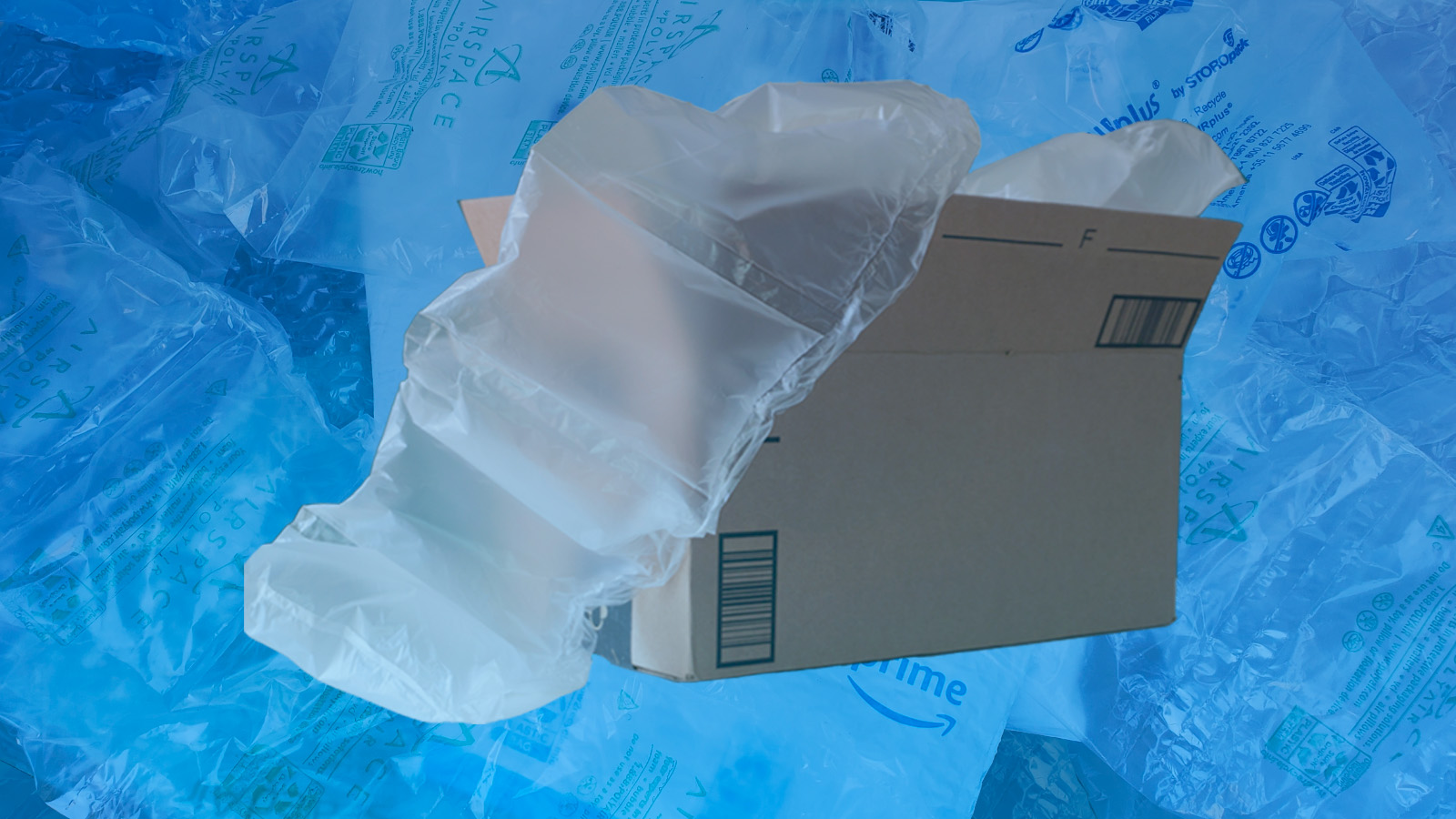
Tell Amazon: It’s time to move beyond wasteful single-use plastic packaging
Shoppers can score some great deals on Amazon Prime Day or Prime Big Deal Days, but they come at a cost: tons and tons of single-use plastic packaging waste added to our environment.
Take Action
Amazon is the world’s largest e-commerce store, delivering millions of packages each day. And there’s no bigger day for sales than Amazon Prime Day.
Shoppers ordered more than 375 million items during the July 2023 two-day Amazon Prime Day sale. The first day of Prime Day was the largest sales day in Amazon’s history. This fall’s Prime Big Deal Days, happening October 10 and October 11, could be even bigger.
The Prime Day deals promise to be good this year, but they come at a cost: a deluge of plastic packaging waste in the form of plastic wraps, plastic bubblewrap envelopes, plastic air pillows and more.
We can try to do the right thing with all that plastic that comes with our Prime Day packages. But the truth is that only a fraction of the plastic we use actually gets recycled. Some plastic is incinerated (with scary results for our air and our climate), but the vast majority of it is sent to landfills, where it’s supposed to stay.
But it doesn’t always work out that way.
Plastic pollution has been found throughout our environment, everywhere from the bottom of the ocean to the top of Mount Everest. Plastic pollution is especially devastating to our world’s oceans and the animals that call them home.
Roughly 8 million tons of plastic enter our oceans every year, where it can be mistaken for food by whales, sea turtles, seabirds and more. Scientists have found plastic fragments in literally hundreds of species, including 100% of all sea turtle species, 44% of all seabird species, and 43% of all marine mammal species.
Tragically, ingesting these plastic fragments can be fatal. When animals ingest plastic waste, it can block their digestive tracts. As a result, they starve to death with bellies full of plastic.
The plastic problem doesn’t end there. Plastics also eventually break down into microplastics, which can blow from the ocean into the air and back on land.
Experts are still sorting out the health and environmental effects of all of this plastic. They know that it’s harming and sometimes even killing wildlife. And they’re studying what it might be doing to us when we ingest or inhale tiny microparticles of it.
And all the while, we keep buying and using and discarding more and more plastic.
As America’s largest online retailer, Amazon goes through a lot of plastic packaging. In 2021 alone, it generated 709 million pounds of plastic waste — enough to circle the planet 800 times in the form of plastic air pillows.
But that means that by taking action, it can also have a big impact on our plastic pollution problem.
Amazon has already taken a few steps in the right direction. In July, Amazon announced that it is “phasing out padded bags containing plastics in favor of recyclable alternatives.” This announcement followed calls from Environment America and thousands of supporters urging the worlds largest e-commerce company to reduce plastic packaging in U.S. shipments. The announcement is a good step in the right direction. Now, Amazon should set an ambitious deadline for that phase-out while continuing to reduce its plastic footprint by eliminating all single-use plastic in its shipments.
Amazon has committed to eliminating single-use plastic packaging in Germany and eliminating single-use plastic film in India. Why can’t Amazon do the same here in the United States?
By raising our voices together, we can convince Amazon to reduce its reliance on plastic packaging.
It’s the same strategy that’s worked for us before. Across the country, our supporters have helped win statewide bans on single-use plastic bags and foam cups and containers — and as a result, 1 in 3 Americans today lives in a state with such a ban.
We’ve also won commitments from other major companies by making our voices heard. Coca-Cola (the world’s worst plastic polluter by one estimate) has agreed to begin phasing out single-use plastic bottles in favor of reusable or returnable options.
As for Amazon, it can’t solve the plastic waste problem all by itself. Yet each time a major company commits to eliminating its plastic waste, it paves the way for another to follow suit.
And in each of these actions, all of us — corporations, governments and individuals — can reduce the amount of plastic waste we’re generating so we can enjoy the cleaner air, parks, streets, beaches and waters that result.
Add your name to our petition urging Amazon to move beyond single-use plastic packaging.
Help us call on Amazon to move beyond wasteful single-use plastic packaging.
Take Action
As director of Environment Oregon, Celeste develops and runs campaigns to win real results for Oregon's environment. She has worked on issues ranging from preventing plastic pollution, stopping global warming, defending clean water, and protecting our beautiful places. Celeste's organizing has helped to reduce kids' exposure to lead in drinking water at childcare facilities in Oregon, encourage transportation electrification, ban single-use plastic grocery bags, defend our bedrock environmental laws and more. She is also the author of the children's book, Myrtle the Turtle, empowering kids to prevent plastic pollution. Celeste lives in Portland, Ore., with her husband and two daughters, where they frequently enjoy the bounty of Oregon's natural beauty.
